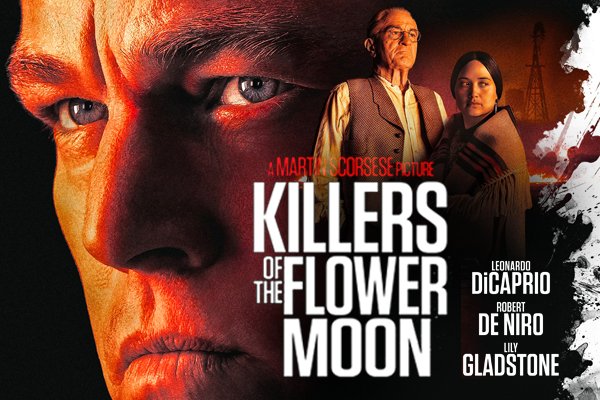
The film’s answer comes in the form of the final scene, which consists of a single overhead shot depicting the Osage I’n Lon-Schka ceremonial dance. The fairly obvious intent of this epilogue is to remind the spectator that Osage culture has not merely survived; even in the face of ongoing settler colonial violence, it thrives. (Perhaps this is one of the reasons why Cote argued the film was not made for an Osage audience; one imagines that they do not need Scorsese to remind them that their culture still exists.) But just as important to this scene is its formal construction. For over a minute, Scorsese’s camera gradually pulls back from a drum to eventually show the entire dance from a distanced god’s eye view. The shot recalls the very first cinematic representations of Indigenous peoples in film history. In 1894, William K. L. Dickson and William Heise made a series of short films in Thomas Edison’s Black Maria studio featuring a group of Indigenous actors who were all members of Buffalo Bill’s Wild West show. The two most famous remnants from this endeavor – Buffalo Dance (dir. William K. L. Dickson, US 1894) and Sioux Ghost Dance (dir. William K. L. Dickson, US 1894) – film the actors at a distance as they perform ostensibly “traditional” ceremonial dances. (As Alison Griffiths (2001) notes, “[T]he Ghost Dance depicted in the Edison film was not the solemn circle dance associated with the spiritual movement of that name, but a different circle dance” (103), suggesting a degree of subversive agency on the part of the Indigenous performers.) However different the underlying intent from the filmmakers may have been, it is striking how closely Scorsese’s final shot resembles Dickson’s gaze – a gaze that quite literally initiated the entire intervening history of Indigenous on-screen representation in American film history.
To my mind, this throws into sharp relief the discourse that frames Killers of the Flower Moon as a referendum on the entire history of that mode of representation. Indeed, it suggests to me that whether or not Killers of the Flower Moon succeeds at the Academy Awards (which is to say, whether or not Hollywood chooses to implicitly congratulate itself for finally “getting it right”) may be beside the point. It would certainly be nice if Hollywood studios and filmmakers took the right lessons to heart here regarding the importance of working collaboratively with Indigenous communities, especially when the director is not Indigenous. Likewise, I think that Lily Gladstone losing a rightfully deserved Best Actress award would be a travesty. But, in terms of the larger politics of representation, what would be the actual impact of a symbolic victory for Killers of the Flower Moon if it wins Best Picture? Through its reflexive examination of the intertwined vectors of mediation and settler knowledge production, the film repeatedly grapples with the ethics of its own representation. Yet, when it is all said and done, it arrives at a film grammar established in 1894. What an awfully long way to come – 129 years of film history and three-and-a-half hours of runtime – to arrive right back at the beginning.
Note: I would like to thank Aandaxjoon Sabena Allen for providing valuable feedback. And I would like to thank J.D. Connor for initially drawing my attention to the parallels between Killers of the Flower Moon and the early Edison films.
Biography
Sebastian Wurzrainer is a settler scholar and a second year PhD student in cinema and media studies at the University of Southern California. He received his bachelor’s degree in film and media studies from Dartmouth College and his master’s degree in cinema and media studies from the University of Southern California. His research considers how Indigenous filmmakers, actors, and spectators enact sovereignty, survivance, and relationality in and around Hollywood films, particularly works of speculative fiction, thereby illustrating alterities to the settler colonial project. He has published reviews and articles in the Journal of the Native American and Indigenous Studies Association and Spectator.






